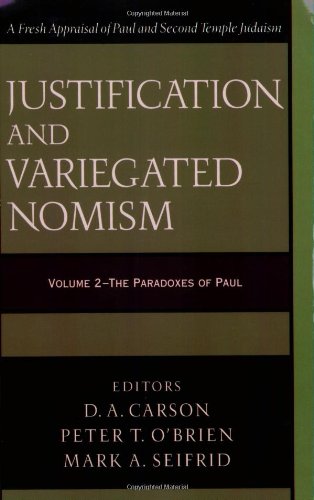A “Bonus” Chapter Summary from Books At a Glance
By Nathan Sundt
About the Author
Timothy George is the Dean of Beeson Divinity School of Samford University
Overview
To open his article, Timothy George sets about the task of rearranging the field of play in the new perspective’s historical theology. George believes that the actual historical data shift the vantage point significantly; what seemed to be the new perspective’s most profound claims may immediately fall flat—hence, George’s fitting subtitle, “Another Perspective.” In particular, George argues that a domesticated reading of Paul is what makes many modern New Testament scholars and historical theologians misread Luther as a misreader of Paul—thus, “Modernizing Luther, Domesticating Paul.”
George first exhibits a picture of Adolph von Harnack, who, in his History of Dogma, describes the central turns of church history as “Pauline reactions,” the apostle being “the conscience of the church.” Harnack himself claimed that Pauline doctrine always caused “ferment” in the history of dogma, rather than a basis for such dogma. George comments that Harnack’s assertion says “more about Harnack than it does about the writings of the apostle born out of due time.” If Harnack himself had been born at a later time, he would have seen the Pauline ferment poured out through the pen of Karl Barth, who discovered a “strange new world within the Bible” and asserted a theocentric theology, decimating the liberal theological project of Harnack and others. What accounts for this Pauline ferment in church history? Does it merely cast out old standards and cast up new theological models to refresh the church? Or is it a returning, again and again, to a solid biblical-theological basis?
Luther’s own reckoning with his salvation was famously Pauline and (not famously enough) exegetical. George notes that “Luther scholars debate when this [justification by faith] breakthrough occurred, the dates on offer ranging from 1512 to 1519, but whenever it happened, it gave to Luther a new interpretive horizon for understanding the Bible in a way that forever transformed his views about God, divine grace, and the Christian life.” George highlights the point that Luther’s wrestling with the texts of Romans and Galatians, delivering lectures and publishing commentaries, was not only in the midst of Reformation controversy, but also antecedent to its heat and passion. In his own life and times, Luther’s ability and accuracy as a reader of Paul was the central issue—even to Luther himself.
“In recent years the status of Luther as a trustworthy interpreter of Paul has been called into question by a cluster of scholars identified with the so-called new perspective on Paul.” The central contention of new perspective historical theologians is that post-Reformation Pauline interpretation envisions the apostle involved in a project to oppose salvation by God’s action, on the one hand, over against human action on the other hand. George is sensitive to the new perspective’s concerns for an accurate appraisal of the first century and nuanced historical exegesis; however, he urges the same for the sixteenth century: “it is another question whether the critics have properly understood the theological and historical context of the Reformers, or have even grasped their basic concerns.” . . .
[To continue reading this summary, please see below....]The remainder of this article is premium content. Become a member to continue reading.
Already have an account? Sign In
Buy the books

JUSTIFICATION AND VARIEGATED NOMISM (VOLUME 2): PARADOXES OF PAUL, edited by D. A. Carson, Peter T. O'Brien, and Mark A. Seifrid